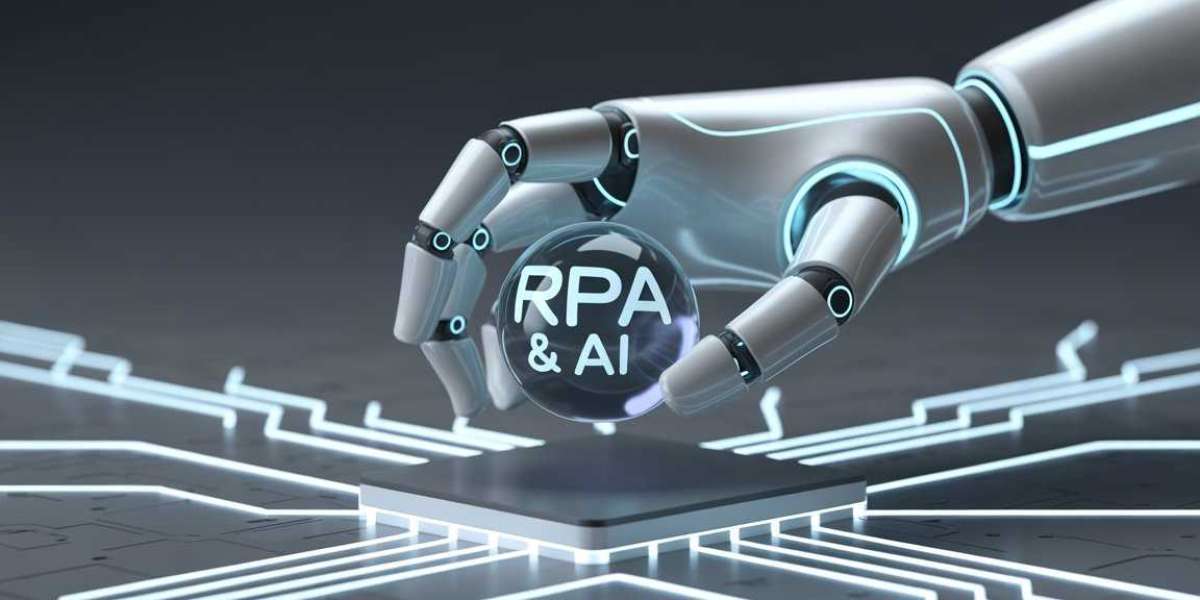Understanding the Synergy Between RPA and AI
What is Robotic Process Automation (RPA)?
Ever felt like you're stuck doing the same digital tasks over and over again? Copying data from one system to another, generating reports, responding to the same customer emails? That’s where Robotic Process Automation (RPA) steps in.
RPA uses software “robots” to mimic human actions within digital systems. Think of it as a tireless assistant that follows set rules and never makes a typo. It’s brilliant at dealing with structured data and rule-based workflows—great for things like invoice processing, onboarding emails, or pulling info from spreadsheets.
Defining Artificial Intelligence (AI) in the Context of Automation
Now, Artificial Intelligence (AI) brings a different superpower to the table. Instead of just following rules, AI learns, reasons, and even adapts. AI technologies like machine learning, natural language processing, and computer vision help systems understand complex data, interact with humans more naturally, and make smart predictions.
In automation, AI plays the role of the “brain,” analyzing, interpreting, and making decisions where RPA is the “hands” doing the clicking, copying, and moving.
How RPA and AI Complement Each Other to Create Intelligent Automation
On their own, RPA and AI are powerful. Together? They become intelligent automation—a game-changer for businesses. Here’s a simple analogy: RPA is like a robot that can follow instructions. AI is like a detective who figures out the best course of action. Put them together, and you have a robot detective who not only acts but also thinks.
Our findings show that combining RPA with AI allows organizations to tackle complex, data-heavy, and decision-based processes—things that used to need human intervention.
Key AI Technologies Empowering RPA
Machine Learning (ML) for Adaptive Automation
Machine Learning allows systems to improve from experience—just like humans learn from mistakes, ML algorithms improve with every data set they analyze. When paired with RPA, ML allows bots to adapt to new inputs or formats without human reprogramming.
For instance, when automating invoice processing, ML helps the bot “understand” different invoice formats from various vendors.
Natural Language Processing (NLP) for Understanding Unstructured Data
Not all business data is clean or organized. NLP helps software bots read and interpret human language—emails, PDFs, chat logs, even voice notes.
From team point of view, we’ve seen how NLP can transform customer support by categorizing and routing thousands of support emails based on urgency and topic. That’s not just automation; that’s intelligent service delivery.
Computer Vision for Visual Data Interpretation
Imagine bots that can "see" what's on your screen—just like a human would. Computer Vision makes this possible, allowing RPA to recognize and interact with images, scanned documents, and video feeds.
Our research indicates that combining RPA and computer vision helps insurance firms process claims from scanned documents or photos—no more manual checks!
Predictive Analytics for Proactive Decision Making
Why wait for something to break when you can predict it? Predictive analytics uses historical data to forecast future outcomes. This makes RPA not just reactive but proactive.
We have found from using this approach that operations teams can schedule maintenance before a machine breaks, based on prediction models built into their automation flows.
From Traditional to Cognitive RPA: The Evolution
Limitations of Traditional RPA with Structured Data
Traditional RPA is fantastic with structured tasks—think rows and columns in spreadsheets. But once the data gets messy or decisions need to be made on the fly, RPA hits a wall.
Cognitive RPA: Harnessing AI to Process Unstructured Data
That’s where Cognitive RPA shines. By integrating AI, bots can now understand emails, images, videos, and natural language inputs. They can even reason, just like a junior employee handling exceptions.
After conducting experiments with it, our team found that cognitive RPA reduced exception handling time by over 50% in a loan processing workflow where documents came in various formats.
Real-World Impact of Cognitive RPA on Business Efficiency
One logistics company used AI-enhanced RPA to scan and interpret shipping documents from multiple languages and formats. The result? 70% faster customs clearance and fewer manual errors. That’s the real-world magic of combining brain (AI) and brawn (RPA).
Enhancing RPA Capabilities with AI
Exception Handling and Error Reduction through AI
Manual exception handling drains time. AI models trained on past exceptions can help bots anticipate, identify, and resolve issues with minimal human touch.
Cognitive Automation: AI Mimicking Human Judgment
When AI evaluates a loan application based on risk factors and RPA moves it through approval workflows, we call that cognitive automation. It's not just smart—it’s scalable.
As per our expertise, this reduces human judgment errors and speeds up decision-making in financial services.
Self-Optimizing RPA Workflows Driven by AI Insights
AI enables bots to learn from performance metrics and self-optimize. That means bots tweak their own rules or ask for human help when anomalies are detected.
Predictive Maintenance and Process Improvement
In manufacturing, bots analyze sensor data and flag when equipment might fail. This minimizes downtime and boosts productivity.
Based on our observations, predictive maintenance using AI-led RPA reduced reactive tickets by 40% for one of our clients.
How RPA Enhances AI Effectiveness
Data Acquisition and Preparation for AI Training
AI is only as good as the data it learns from. RPA automates the tedious task of data collection and cleansing, making it ready for AI training.
Bridging Legacy Systems for AI Integration
Many enterprises still rely on legacy systems. RPA acts as a bridge, helping AI tools pull data from systems that don’t have modern APIs.
Human-in-the-Loop (HITL) for AI Oversight and Compliance
RPA helps coordinate HITL workflows by routing exceptions or compliance reviews to humans, ensuring ethical and accurate AI outputs.
Monitoring AI Performance and Ensuring Reliability
Using RPA, we can automate logging, reporting, and alerting on AI model performance—an essential task in maintaining trust in AI systems.
Practical Applications and Use Cases of RPA and AI Integration
Customer Service Automation with AI-Driven Intent Recognition
With NLP, bots can understand customer intent and respond appropriately. For example, chatbots that know when you're asking about refunds vs. technical support—creating better customer experiences.
Real-Time Activity Recognition Systems
In healthcare, AI-powered systems recognize patient activity in real-time, while RPA logs data, triggers alerts, or schedules appointments.
Automated Document Processing and Data Extraction
Finance teams use AI to extract data from invoices, receipts, contracts, and RPA to input them into accounting systems. It’s seamless and incredibly efficient.
Implementation Strategies for Intelligent Automation
Assessing Processes Suitable for RPA and AI Integration
Start with processes that are high volume, rule-based, and prone to errors. Add AI where unstructured data or judgment is involved.
Designing Scalable Intelligent Automation Architectures
Use a modular approach. Don’t automate everything at once—test small, scale smart. Combine RPA platforms with AI engines for best results.
Overcoming Challenges in AI and RPA Deployment
Expect hurdles like data silos, resistance to change, and skill gaps. Overcome them with training, leadership buy-in, and a clear roadmap.
Comparative Overview of RPA, AI, and Intelligent Automation
Feature | RPA Alone | AI Alone | Combined RPA + AI |
Data Type Handled | Structured | Structured Unstructured | All types of data |
Decision Making | Rule-based | Pattern recognition | Predictive and cognitive |
Exception Handling | Limited | Advanced | Proactive, automated |
Process Optimization | Static | Dynamic learning | Continuous self-optimization |
Integration with Legacy Systems | Moderate | Challenging | Seamless via RPA |
Human Oversight | Required for edge cases | Required for model integrity | Integrated Human-in-the-Loop for compliance |
The Future of Intelligent Automation: Trends and Innovations
Hyperautomation and Beyond: The Next Frontier
Gartner defines hyperautomation as the orchestrated use of RPA, AI, and more. Expect more intelligent bots, low-code tools, and citizen developers joining the automation wave.
Role of AI Ethics and Governance in Automation
As automation decisions impact real people, ethics matter. Transparent AI, bias mitigation, and explainability will take center stage.
Abto Software as a Leading Example in AI and RPA Innovation
Through our practical knowledge, Abto Software has shown leadership in combining RPA and AI to deliver transformative business outcomes—especially in finance, healthcare, and logistics.
Conclusion
RPA and AI are no longer future tech—they’re today's advantage. The shift from basic automation to intelligent, self-optimizing workflows is real and happening now. From smarter customer service to predictive business decisions, the blend of RPA’s efficiency and AI’s intelligence is driving a new era of innovation.
Drawing from our experience, the companies seeing the most success are those that start small, learn fast, and scale smart—with a clear focus on both tech and team training.
FAQs
- What is the difference between RPA and AI? RPA is rule-based automation for repetitive tasks. AI adds learning and decision-making capabilities. Combined, they deliver intelligent automation.
- Can RPA work without AI? Yes, but it's limited to structured, rule-based tasks. AI expands RPA’s capabilities to handle complex, unstructured data.
- What are common use cases of RPA and AI integration? Invoice processing, intelligent chatbots, predictive maintenance, and real-time activity monitoring are popular use cases.
- How do I choose a process for intelligent automation? Look for high-volume, manual, error-prone tasks—especially those involving both structured and unstructured data.
- What industries benefit the most from RPA and AI? Finance, healthcare, logistics, retail, and manufacturing are top adopters seeing fast ROI from intelligent automation.
- What are the risks of combining RPA with AI? AI introduces complexity, data privacy challenges, and ethical concerns. Proper governance and oversight are key.
7. How can small businesses start with intelligent automation? Start with low-cost, cloud-based RPA tools. Gradually integrate AI capabilities like OCR and chatbots as your needs grow.



